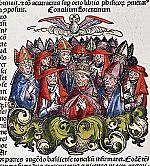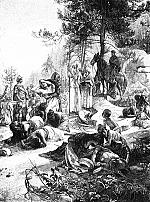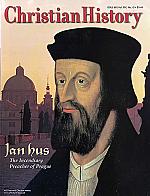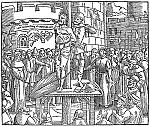When Jerusalem wept
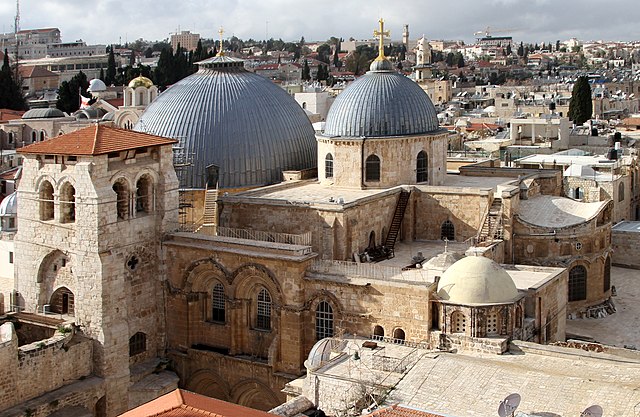
[Church of the Holy Sepulchre cropped to approximately the area of the original church—Gerd Eichmann / [CC-BY-SA-4.0] Wikimedia File:Church of the Holy Sepulchre by Gerd Eichmann (cropped).jpg]
Without sensationalizing, this account of Christian struggles in the Holy Land captures the imagination—becoming another favorite of our readers over the years.
In 614 the armies of Khosrow II, king of the Sassanids, who had ruled the Persian Empire since the third century, entered Jerusalem, occupied it, and captured the relic of the holy cross. For the first time Persians had penetrated Palestine and taken, in the words of a Christian eyewitness, “that great city, the city of the Christians, Jerusalem, the city of Jesus Christ.”
Strategos, a monk, wrote an account of the invasion. He described the seizure of the holy cross, Patriarch Zachariah’s capture and deportation, and the sack of the city. The Persians pillaged and killed women, children, and priests. “And the Jerusalem above wept over the Jerusalem below,” Strategos wrote. He drew parallels between the destruction of Christian Jerusalem and the ancient Israelites’ Babylonian exile. As Zachariah and other captives were led out of the city, the patriarch extended his hands toward the city and said as he wept,
Peace be with you, O Jerusalem, peace be with you, O Holy Land, peace on the whole land; Christ who chose you will deliver you.
The Sassanid occupation seemed a temporary interruption of Christian rule. Byzantine emperor Heraclius launched an unexpected counteroffensive. By the spring of 629 he reached Palestine and by March entered Jerusalem in triumph. Yet the victory was short-lived. In less than a decade, Muslim armies would be at the city’s gates.
The patriarch and the caliph
When Muslim armies streamed into Palestine in the summer of 634, they struck first around Gaza on the Mediterranean coast. Gaining the loyalty of local Arabic-speaking tribes in the deserts, they began to lay siege to the cities. Though the Byzantines outnumbered the Muslim forces four to one, they were no match for the fervent desert warriors.
Only two decades after the Sassanids took Patriarch Zachariah captive, Sophronius, his successor, watched helplessly as invaders again swept across the Holy Land. He was assigned the unhappy task of negotiating a treaty with Caliph Umar, Muslim conqueror of Jerusalem.
They did so in the courtyard of the Church of the Holy Sepulchre. At time for prayer, the caliph said to Sophronius, “I wish to pray.” Sophronius led him into the church, but Umar refused and prayed alone on the church’s eastern steps instead. He said,
Do you understand, O patriarch, why I did not pray within the church? … If I had prayed in the church it would be ruined for you. For it would be taken from your hands and after I am gone the Muslims would seize it saying, “Umar prayed here.”
Umar then wrote a document forbidding Muslims from praying in that church. In return he asked Sophronius for a place to build a mosque. Sophronius led him to a rock on the Temple Mount. Because of Jesus’s prophecies about the Temple, Christians had never built a church there.
In his Christmas sermon in 638, Sophronius interpreted the Muslim invasion as he had the Persian one: the Arabs were God’s instruments to chastise Christians for their sins, and in time the invaders would be driven from the Holy Land. But with the arrival of Muhammad’s armies and the swift establishment of Arab hegemony, Christian rule in Jerusalem came to a decisive end.
Perseverance of the saints
Like the Jews hoping for a deliverer before them, some Christians hoped a Messiah-like deliverer would drive out the “godless Saracens” and restore the “kingdom of the Christians” to Jerusalem. Such hopes languished but set the stage for the Crusades 400 years later.
Muslim settlement in the meantime, however, did not mean the end of Christian life. In many places life went on without interruption, and Christians adapted. They adopted Arabic, the language of the conquerors, for Christian worship and scholarship. They made the slow transition to a new culture and society shaped by Islam. The Holy Land may have changed, but Christian witness persevered.—Robert Louis Wilken, from CH #97
By Robert Louis Wilken
[Christian History originally published this article in Christian History Issue #150 in 2024]
Robert Louis Wilken is emeritus professor of the history of Christianity at the University of Virginia.Next articles
Conquests and convents, division and dung
Expanding Christendom, if necessary by force, had become part of a king’s duty.
G. R. Evans, Ann K. Warren, George T. Dennis, Daniel V. RunyonMoments that mattered
Issues that stood out to previous editors and contributors.
Elesha Coffman, Bill Curtis, David Neff, Jennifer Woodruff Tait,Support us
Christian History Institute (CHI) is a non-profit Pennsylvania corporation founded in 1982. Your donations support the continuation of this ministry
Donate



